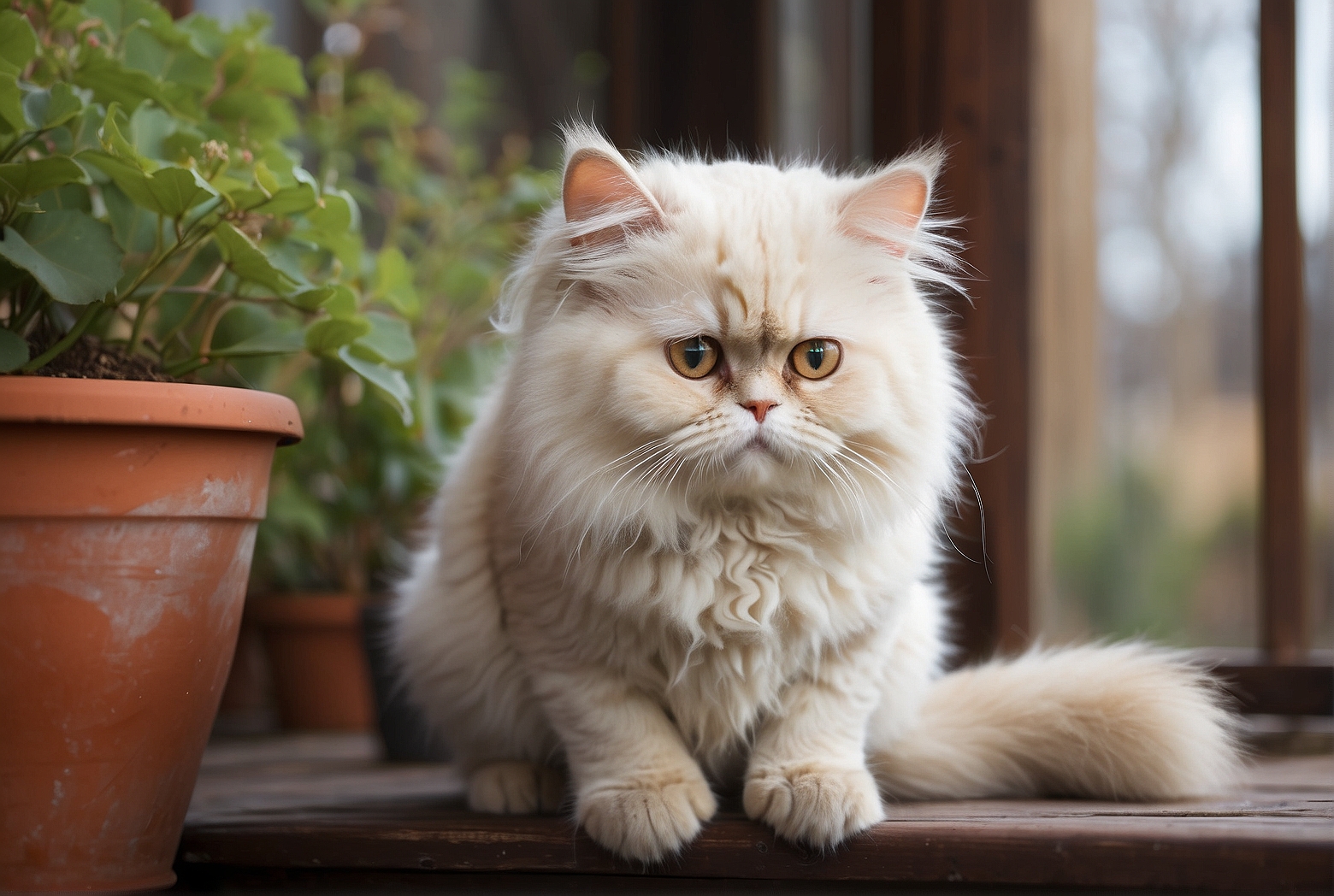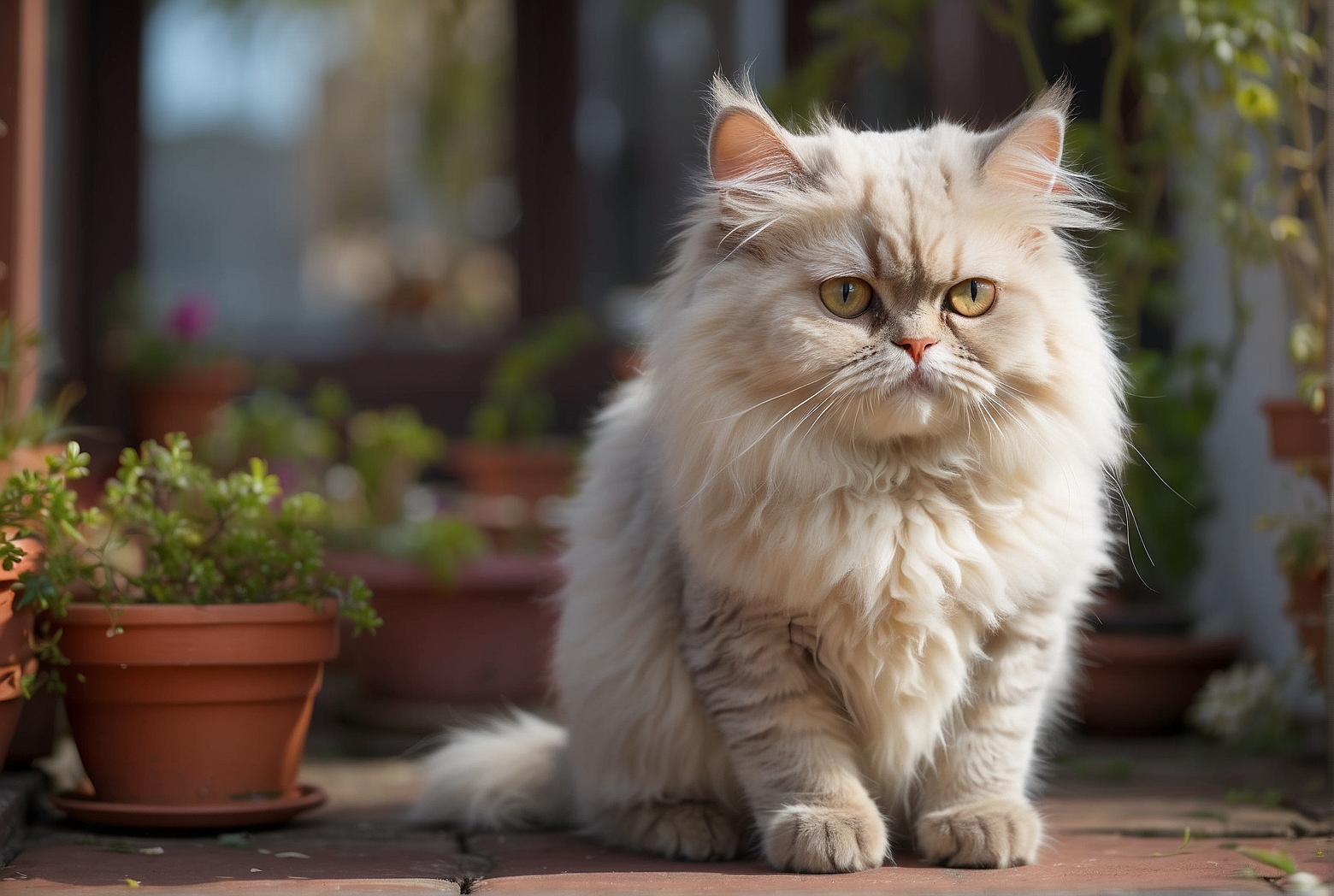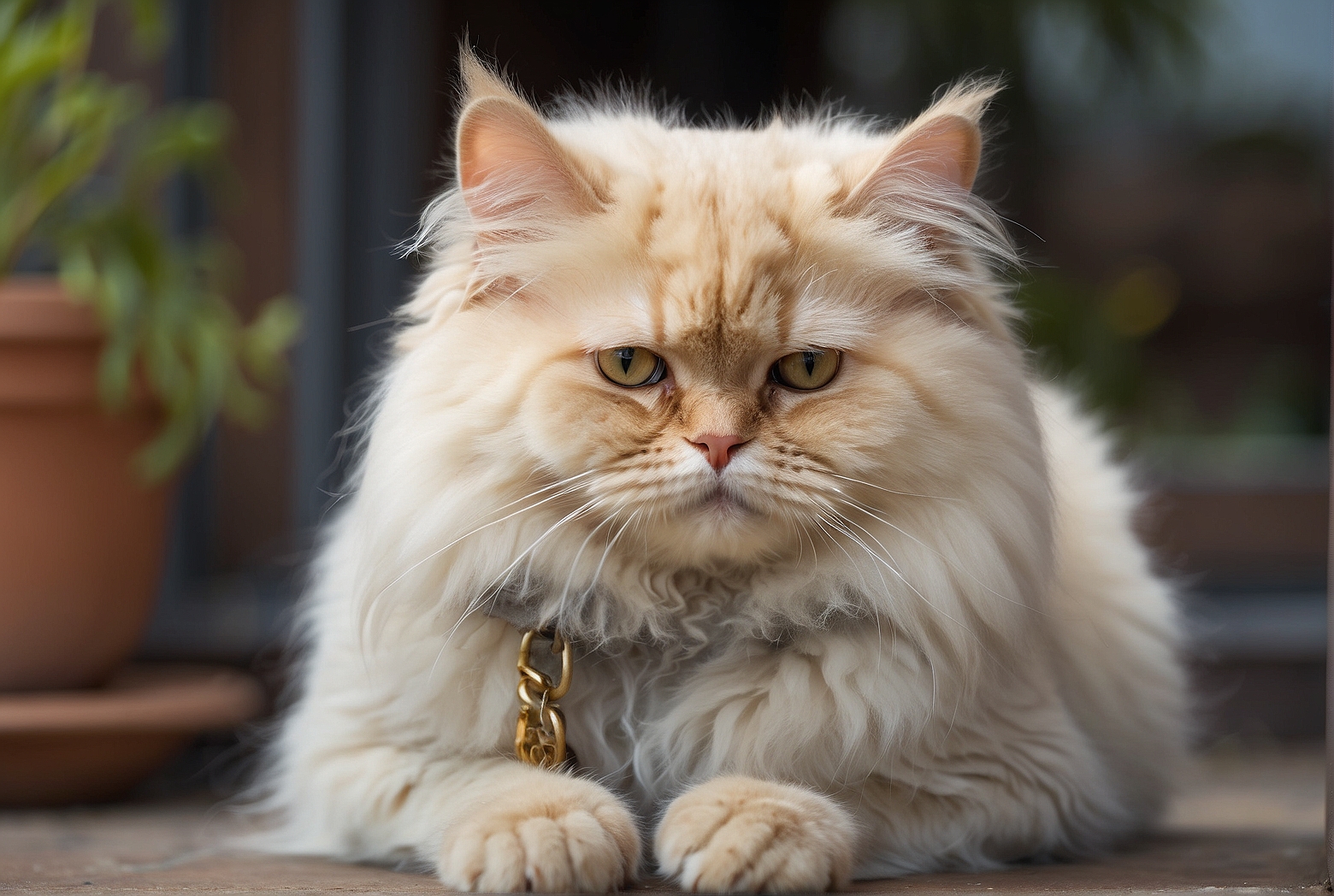Did you know that Persian cats have a luxurious and distinctive long fur coat, making them one of the most elegant cat breeds? However, despite their regal appearance, Persian cats are not suited for life outdoors. In this article, we’ll explore the reasons behind why Persian cats should stay indoors and the potential hazards they may encounter if they venture outside. From their grooming needs to their vulnerability to certain health issues, you’ll discover why keeping these beautiful felines indoors is the best decision for their overall well-being.
Safety concerns
Vulnerability to predators
Persian cats, with their luxurious, long coats and adorable faces, are undeniably a sight to behold. However, their physical characteristics make them vulnerable to predators when they venture into the great outdoors. Their luscious fur, though beautiful, hinders their ability to escape from potential threats. Unlike their short-haired counterparts, Persian cats lack the agility needed to climb trees or fences to evade danger. This susceptibility makes it crucial to keep them indoors, away from the lurking eyes of predators.
Risk of accidents
Another safety concern for Persian cats venturing outside is the risk of accidents. Although they may be known for their majestic looks, their physical features, such as their flat faces and shortened snouts, can pose breathing difficulties. These brachycephalic traits make it challenging for Persians to regulate body temperature efficiently. Consequently, they are more susceptible to heatstroke and exhaustion, especially under the scorching sun. Additionally, their large, round eyes are more prone to injuries from outdoor elements, such as debris or close encounters with branches. To ensure their well-being, it is best to keep these precious felines indoors, where they can roam without fear of accidents.
Exposure to diseases
Persian cats are not only at risk of physical harm when outside but also face the potential threat of diseases. When encountering other animals, especially those of unknown health status, Persians may come into contact with various pathogens. Outdoor spaces, such as parks or gardens, can harbor parasites, bacteria, and viruses that pose health risks to our furry friends. Without the protective barrier of controlled indoor environments, Persian cats can be prone to infections, flea infestations, and vector-borne diseases. To safeguard their health, it is advisable to keep them exclusively indoors and minimize their exposure to potential sources of diseases.
Physical characteristics
Low tolerance to extreme temperatures
One of the primary reasons why Persian cats are best kept indoors is their low tolerance to extreme temperatures. Their long, thick fur may provide insulation in cooler climates, but it becomes a burden in hotter environments. The dense coat hinders their ability to dissipate heat effectively, making them susceptible to heat-related illnesses. They may experience heat exhaustion, dehydration, and even heatstroke. To ensure their utmost comfort and well-being, it is essential to provide a climate-controlled environment indoors, where they can stay cool during the scorching summer months.
Predisposition to respiratory issues
Persian cats’ distinctive facial structure, characterized by shortened snouts and flattened faces, predisposes them to respiratory problems. This adorable physical trait, known as brachycephaly, is undoubtedly charming, but it comes at a cost. The compressed nasal passages and elongated soft palate can lead to difficulties in breathing, especially during physical exertion or when faced with warm and humid conditions. Going outside can exacerbate these respiratory issues, making it uncomfortable and potentially harmful for them. By keeping Persian cats indoors, we can provide them with a controlled environment that minimizes the risk of respiratory distress and promotes better respiratory function.

Hindered agility
Though Persians are undoubtedly graceful creatures, their majestic appearance belies a lack of agility compared to other cat breeds. Their somewhat stocky build, short legs, and the weight of their luxurious fur inhibit them from navigating outdoor spaces with ease. Jumping, climbing, and defending themselves against potential threats become challenging tasks. In unfamiliar or hazardous environments, such as encountering aggressive animals or traffic, their limited agility puts them at a severe disadvantage. To protect these gentle companions from harm and ensure their safety, it is best to preserve their indoor lifestyle.
Grooming requirements
High maintenance coat
One characteristic that truly sets Persian cats apart is their exquisite long coat. While their fur may be their crowning glory, it also brings with it high maintenance requirements. Persian cats require regular grooming to prevent mats, tangles, and dirt accumulation in their luxurious locks. The demands of maintaining their fur increase significantly when exposed to the elements outdoors. Dust, debris, and potential encounters with moisture make it even more challenging to keep their coats in pristine condition. By keeping them inside, we can control their environment and maintain their stunning appearance more effectively.
Dirt and debris accumulation
An outdoor environment, no matter how carefully curated, is bound to contain dirt, dust, and other debris. Unfortunately, these particles have an uncanny ability to find their way into Persian cats’ long, flowing coats. The accumulation of dirt and debris not only compromises their aesthetic appeal but can also lead to discomfort, itching, and potential skin issues. Given their high grooming requirements, it is logical to minimize exposure to outdoor elements to avoid unnecessary dirt and debris buildup. By providing a clean and controlled indoor environment, we can substantially reduce the risk of these issues and ensure our Persian companions remain healthy and comfortable.
Potential for breeding
Maintaining breed purity
Preserving the integrity and purity of the Persian breed is of utmost importance for cat enthusiasts and breeders. Allowing Persian cats to roam freely outdoors significantly increases the risk of uncontrolled breeding with other feline companions. These unplanned matings can result in mixed breed offspring, diluting the unique characteristics and lineage of purebred Persians. By keeping them indoors and closely monitoring their interactions with other felines, we can ensure controlled breeding practices and maintain the exceptional qualities that make Persian cats so sought after.
Preventing unwanted pregnancies
In addition to concerns about breed purity, the potential for unwanted pregnancies is another compelling reason to keep Persian cats indoors. Breeding Persians requires careful planning, consideration, and responsible ownership. Allowing these precious cats to go outside unsupervised puts them at risk of unintended mating encounters, which can lead to unwanted pregnancies and subsequent challenges for both the mother and the resulting kittens. By confining them indoors, we can prevent these situations and help promote responsible pet ownership.
Health and genetics
Risk of injuries
While we strive to provide a safe outdoor environment for our feline friends, accidents and injuries can still occur. Exposure to unpredictable elements, interactions with other animals, or even encounters with unfamiliar territory may put Persian cats in harm’s way. Additionally, their lack of agility and physical strength compared to some other breeds increases the risk of injuries when faced with aggressive animals or in territorial conflicts. To minimize the potential for harm, it is best to keep Persian cats indoors, where we can control their environment and protect them from unnecessary risks.

Hereditary disorders
Like any other living creature, Persian cats are not immune to genetic disorders. Certain hereditary conditions, such as polycystic kidney disease (PKD), hypertrophic cardiomyopathy (HCM), or progressive retinal atrophy (PRA), can be prevalent in this breed. While responsible breeding practices aim to minimize the occurrence of these disorders, the risk still exists. By providing a controlled indoor environment, we can optimize their health care, manage potential health issues more effectively, and ensure their overall well-being.
Environmental factors
Exposure to toxins
Outside, nature provides a plethora of sights, sounds, and smells that may pique a Persian cat’s curiosity. Unfortunately, this curiosity can unwittingly lead them to encounter hazardous substances. Various common garden plants, such as lilies or azaleas, are toxic to cats and can cause severe illness or even be fatal if ingested. Pesticides, fertilizers, and other chemicals used in outdoor spaces pose further risks to their well-being. By keeping them indoors, we can eliminate the danger of accidental exposure to harmful substances, providing them with a safe and toxin-free environment.
Encounter with aggressive animals
Interactions with other animals can be unpredictable, especially when it comes to territorial encounters. Persian cats, with their gentle nature and limited agility, may struggle to defend themselves against aggressive animals encountered outside. Such confrontations can result in physical injuries and emotional distress for our feline companions. By keeping them indoors, we minimize the risk of confrontations with aggressive animals and ensure their safety and emotional well-being.
Human interference
Interaction with unfamiliar people
Persian cats, with their captivating beauty and affectionate demeanor, may easily attract attention from passersby when outdoors. While most people have good intentions, unsupervised interactions with unfamiliar individuals can be stressful for Persian cats. Their gentle nature and sensitive disposition may not fare well with rough handling or unfamiliar environments. By keeping them indoors, we can shield them from potentially overwhelming encounters with unfamiliar people and ensure their comfort and peace of mind.
Theft or abduction risk
Persian cats, often sought after for their distinctive looks and charming personalities, unfortunately, become targets for theft or abduction. The allure of a prized purebred Persian may be irresistible to unscrupulous individuals seeking financial gain. By allowing them to roam outside unsupervised, we expose them to the risk of being stolen or even intentionally taken for illegal purposes. Keeping them securely indoors dramatically reduces the chances of theft or abduction, ensuring their safety and the peace of mind of their owners.
Territorial conflicts
Stray cat confrontations
When Persian cats venture outside their designated territories, they may encounter other cats, including strays or feral felines. Territorial conflicts can quickly escalate and become physically harmful for all parties involved. Persian cats, with their gentle nature and limited agility, may find themselves at a severe disadvantage in such confrontations. Stray cats may carry diseases or parasites that can pose a risk to the health of our beloved pets. By keeping Persian cats indoors and providing them with a defined territory, we can avoid these territorial disputes, minimize the risk of infections, and ensure their safety.
Fighting for resources
Outdoor spaces are bound to have limited resources, such as food, water, or shelter. Competing for limited resources with other animals can lead to aggressive interactions and territorial disputes. Persian cats, with their gentle disposition and less assertive nature, may struggle to defend their resources against more dominant feline counterparts. By keeping them indoors and providing all the necessary resources within their controlled environment, we can eliminate conflicts over essential supplies and promote a harmonious and stress-free existence for them.
Lost or trapped
Getting lost in unfamiliar surroundings
Persian cats, though intelligent and resourceful, may become disoriented in unfamiliar surroundings. An outdoor environment offers a vast array of new scents, sounds, and sights that may distract them and lead to them becoming lost. Unlike some other breeds known for their navigational instincts, Persian cats may struggle to find their way back home when disoriented. By keeping them indoors and providing a stable and familiar environment, we can avoid the heartache and stress of our feline companions becoming lost in unfamiliar territories.
Becoming trapped in tight spaces
Curiosity is an inherent trait among cats, and Persian cats are no exception. When outside, their desire to explore can lead them to venture into tight spaces, such as crawl spaces, under cars, or behind fences. Unfortunately, their physical characteristics, including their luxurious fur and limited agility, may hinder their ability to navigate back out of these tight spots. This situation can lead to anxiety, distress, and potential injuries when attempting to escape. By keeping them indoors, we can avoid these potentially dangerous scenarios and provide them with a comfortable and secure living environment.
Indoor alternatives
Providing a stimulating environment
Keeping Persian cats indoors does not mean depriving them of a fulfilling and stimulating life. Creating an enriching indoor environment is essential for their overall well-being. Offering various engaging toys, scratching posts, and interactive equipment can provide mental stimulation and physical exercise to keep them happy and healthy. Regular playtime and designated areas for climbing and exploration can help replicate the experiences they would have enjoyed outdoors while ensuring their safety and minimizing potential risks.
Interactive toys and scratching posts
Persian cats, like all felines, require an outlet for their natural instincts and behaviors. Keeping them indoors necessitates providing them with appropriate toys to engage their hunting and pouncing instincts. Interactive toys, such as puzzle feeders or laser pointers, can keep their minds sharp and their bodies active. Additionally, scratching posts and designated areas for climbing and perching help satisfy their need for vertical space and provide an outlet for natural scratching behaviors. By offering these alternatives, we can provide Persian cats with a stimulating environment, preventing boredom and ensuring their overall well-being.
In conclusion, while the allure of the great outdoors may beckon, it is crucial to prioritize the safety and well-being of our Persian cat companions. Their vulnerability to predators, risk of accidents, exposure to diseases, and the unique challenges posed by their physical characteristics make it clear that keeping them indoors is in their best interest. By maintaining breed purity, protecting their health, minimizing environmental risks, avoiding human interference, and providing stimulating alternatives, we can ensure that Persian cats lead fulfilling, secure, and happy lives within the confines of our homes.
